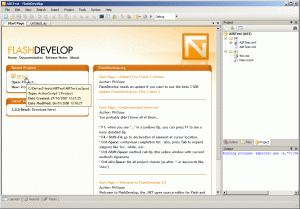Last update : June 29, 2015
Eclipse is an open source community whose projects are focused on building an open development platform comprised of extensible frameworks, tools and runtimes for building, deploying and managing software across the lifecycle. A detailed overview about the Eclipse software is available at Wikipedia.
I started a year ago to use the EUROPA version (platform 3.3) of Eclipse to develop JAVA applications for the web. I changed later to the release GANYMEDE (plaform 3.4.) published in june 25th, 2008. I used the IDE for Java EE Developers (163 MB) with tools for Java developers creating JEE and Web applications.
A tutorial how to create servlets with Eclipse has been published on the Java Tips website. A french tutorial about servlets and jsp pages with Eclipse and Tomcat is available at the website of Serge Tahé (Maître de conférences en Informatique à l’université d’Angers). Another useful tutorial about Struts (méthode de développement gérée par l’Apache Software Foundation qui a pour but de fournir un cadre standard de développement d’applications web en Java respectant l’architecture dite MVC : Modèle – Vue – Contrôleur ) has been edited by the same author.
Other interesting tutorials are listed below :
To integrate my existing Java projects in Eclipse, I created a new Java Project in the Eclipse Workspace, copied the folder with the source files in this new project folder and executed the file – refresh menu.
The Eclipse platform is also used for Android developments, a preconfigured ECLIPSE version is included in the Google Android SDK.
In the context of the OFUR project, I installed in late June 2015 the new Eclipse Mars version (4.5) with the Javascript Development Tools (from the Web, XML, JavaEE and OSGi section), the Eclipse Web Developer Tools and the jshint Tools.
I added my signature files ida_dsa and ida_rsa to the SSH2 settings in the Eclipse – Window – Preferences – General -Network Connections – SSH2 menu. I accepted the default location for the workspace (users/mbarnig/workspace) and for the local GIT repository (users/mbarnig/git) in the Eclipse – Window – Preferences – Team – Git menu.
To checkout the original code for the DICOM Web Viewer (DWV), I entered the HTTPS clone URL of the DWV Github front page to the Git Repository in the Eclipse – Window – Show View – Others – Git menu, clicked the Clone a Git Repository action and selected the master branch to start the download of the source code.
The DWV tree was loaded into the local DWV repository. In the root source folder the file eclipse.epf (Eclipse Process Framework Project) produces a customizable software process enginering framework. I imported the .epf file with the menu File – Import – General – Preferences.

